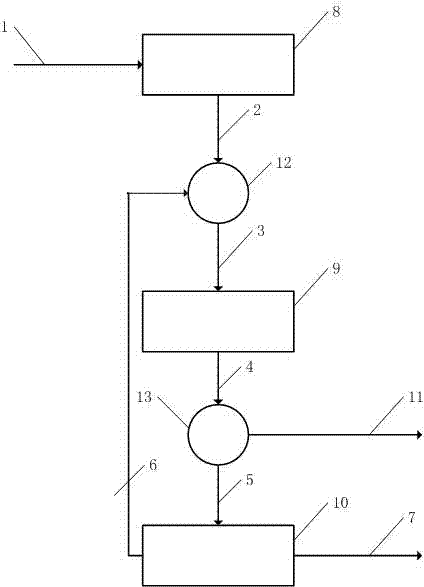Improved Carnot cycle method
A Carnot cycle, heat technology, applied in steam engine installations, machines/engines, mechanical equipment, etc., can solve the problems of less mechanical work and power consumption, and achieve the effect of improving thermal efficiency
- Summary
- Abstract
- Description
- Claims
- Application Information
AI Technical Summary
Problems solved by technology
Method used
Image
Examples
Embodiment Construction
[0042] In order to make the object, technical solution and advantages of the present invention clearer, the present invention will be further described in detail below in conjunction with the accompanying drawings and embodiments. It should be understood that the specific embodiments described here are only used to explain the present invention, not to limit the present invention.
[0043] figure 1 A schematic diagram of an improved Carnot cycle structure of the present invention is shown.
[0044] figure 2 A flow chart of an improved Carnot cycle method of the present invention is shown.
[0045] refer to figure 2 ,Such as figure 2 An improved Carnot cycle method is shown, comprising the following steps:
[0046] S1, heat is input from the high-temperature heat input terminal 1 to maintain the high-temperature heat source 8, and the high-temperature heat source 8 outputs heat to the high-temperature full heat output 2;
[0047] S2, the heat of the high-temperature to...
PUM
 Login to View More
Login to View More Abstract
Description
Claims
Application Information
 Login to View More
Login to View More - R&D
- Intellectual Property
- Life Sciences
- Materials
- Tech Scout
- Unparalleled Data Quality
- Higher Quality Content
- 60% Fewer Hallucinations
Browse by: Latest US Patents, China's latest patents, Technical Efficacy Thesaurus, Application Domain, Technology Topic, Popular Technical Reports.
© 2025 PatSnap. All rights reserved.Legal|Privacy policy|Modern Slavery Act Transparency Statement|Sitemap|About US| Contact US: help@patsnap.com


